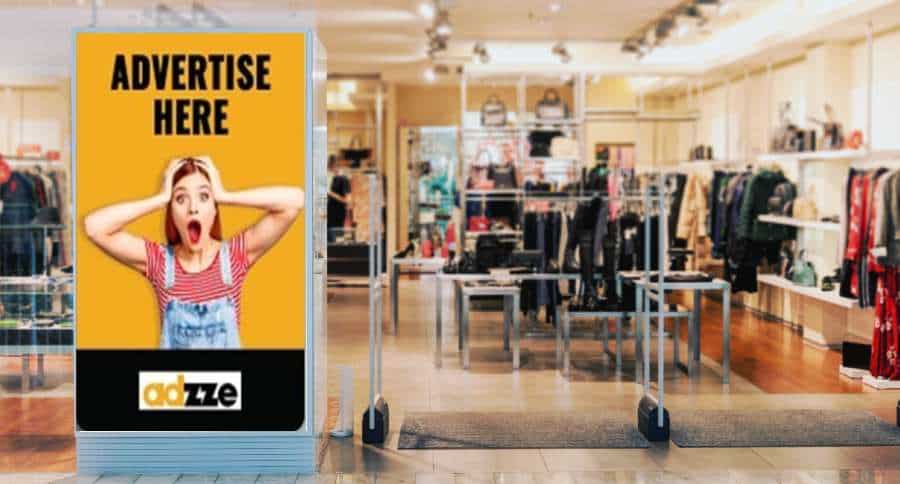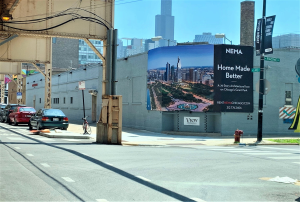Shopping Mall Ads Are Evolving—And Cultural Relevance Is the New Currency
Walk through any modern mall, and you’ll see more than retail promotions—you’ll see themed pop-ups, cultural festivals, food truck activations, and selfie-ready art installations. These cultural events and pop-up experiences aren’t just attracting foot traffic—they’re transforming the way shopping mall ads are created, placed, and consumed.
For decades, the standard shopping mall ad lived in a static space: backlit panels, escalator banners, maybe a giant hanging poster. Today, malls are becoming dynamic cultural hubs, where ads in shopping malls must adapt to the rhythms of events and consumer curiosity.
In this blog, we’ll explore how shopping mall advertising is shifting in response to event-driven experiences, and why marketers should lean into these activations as strategic ad opportunities—not just atmosphere.
Shopping Mall Ad: Static vs. Event-Driven Strategy
Before we explore the synergy between ads in shopping malls and cultural pop-ups, let’s look at the traditional setup.
Traditional Shopping Mall Advertisement Strategy:
Backlit corridor signage
Storefront wraps
Elevator and escalator wraps
Static floor decals
Food court banners
These formats still matter. But in isolation, they often suffer from banner blindness—especially when they don’t tie into anything relevant or timely.
Event-Integrated Shopping Mall Ad Strategy:
QR-code-enabled signage tied to live event offers
Branded zones at cultural showcases
Interactive kiosks near festival entrances
Augmented reality experiences tied to mall maps
Sponsored content walls for selfies at pop-ups
When brands align their shopping mall ads with the emotions and energy of a live event, their message becomes part of a memory—not just part of the background.
Why Cultural Events and Pop-Ups Boost Shopping Mall Ad Engagement
Cultural events and pop-ups serve as emotional accelerators. They create surprise, curiosity, nostalgia, or joy—making shoppers more open to discovery and interaction.
Here’s why they supercharge your shopping mall advertising strategy:
Contextual Relevance
An ad in a shopping mall that promotes wellness supplements feels more relevant during a “New Year, New You” health expo than on a random Tuesday. When ads align with the event theme, relevance goes up—so does ROI.
Built-In Foot Traffic
Cultural events drive higher-than-normal mall attendance. From Lunar New Year celebrations to Latin music weekends, your shopping mall ad gets higher impressions per dollar simply because more people are engaged and present.
Emotional Connection
Cultural activations are immersive, emotional, and often community-driven. Your brand gets the halo effect just by being present—or better, embedded in the experience.
Shopping Mall Ad Tactics That Pair Well with Events
If your brand wants to capitalize on cultural foot traffic and live experiences, here’s how to adapt your shopping mall ads effectively:
Event-Triggered Signage
Use digital panels or posters that change messaging based on the day or event. For example:
“Celebrate Diwali—Get 10% Off Our Gold Collection Today”
“Free Samples During the Mall Wellness Expo – Booth #12”
🧠 This makes your shopping mall advertisement feel timely and intentional.
Branded Zones and Sponsorships
Partner with mall management to sponsor pop-up lounges, cultural stages, or selfie walls. Include:
Light branding on décor
Interactive photo opportunities
Exclusive giveaways linked to a shopping mall ad code
🧠 This turns your brand into a co-host—not just an advertiser.
QR Codes and Interactive Elements
Connect your static shopping mall ad to something digital: a product demo, event schedule, AR lens, or mobile coupon.
🧠 Shoppers move fast. Make it easy to take action without needing a conversation.
Cross-Promotion with Mall Tenants
If your ad in shopping mall promotes a product that’s also sold at an on-site store, cross-promote:
“See the full collection at Zara, Level 2”
“Buy 2, Get 1 In-Store Today Only—Mention This Poster”
🧠 Bridging the gap between awareness and purchase location is key for mall-based ROI.
Case Study: Food Festival Pop-Up + Interactive Shopping Mall Ads
A national frozen foods brand partnered with a major mall chain during a “Global Street Food” festival. They executed:
A branded food booth with samples
A recipe wall sponsored by the brand
Ads throughout the mall directing visitors to “Taste Zone A”
QR codes that linked to at-home recipes using their products
Results:
Over 20,000 QR code scans in one weekend
A 12% sales increase at the on-site supermarket selling their products
4x the engagement of their usual static shopping mall ads
The Role of Storytelling in Shopping Mall Advertising During Events
Shopping mall advertising during events isn’t about shouting—it’s about storytelling.
Consider shifting ad copy from “Buy Now” to:
“Feel the Culture. Taste the Difference. Find It Inside.”
“Inspired by this weekend? Take it home—Booth 202.”
This aligns your shopping mall ad with the shopper’s emotional journey, turning your message into a moment.
How to Plan Your Shopping Mall Ads Around Cultural Events
Here’s a simple strategic calendar to align your ads in shopping mall campaigns:
Month | Event Theme | Sample Ad Concept |
January | Health & Wellness | “Start Fresh – Shop Superfoods on Level 1” |
February | Lunar New Year | “Prosperity Picks – Limited-Time Offers in Store” |
June | Pride Month | “Celebrate Love – Get Rainbow Rewards at Checkout” |
September | Hispanic Heritage | “Flavors of Culture – Find Yours Today” |
December | Holiday Markets | “Unwrap Local Gifts – Booth #45” |
🧠 Pro tip: Ask mall marketing teams for their cultural event calendars 3–6 months in advance.
Final Thoughts: Shopping Mall Ads Are Stronger When They’re Story-Driven and Culturally Connected
It’s time to think of shopping mall advertising as more than exposure—it’s experience design. The best ads in shopping malls aren’t just seen. They’re felt, remembered, and shared.
By syncing your messaging with the mood and momentum of cultural events and pop-ups, you don’t just rent space—you earn attention.






